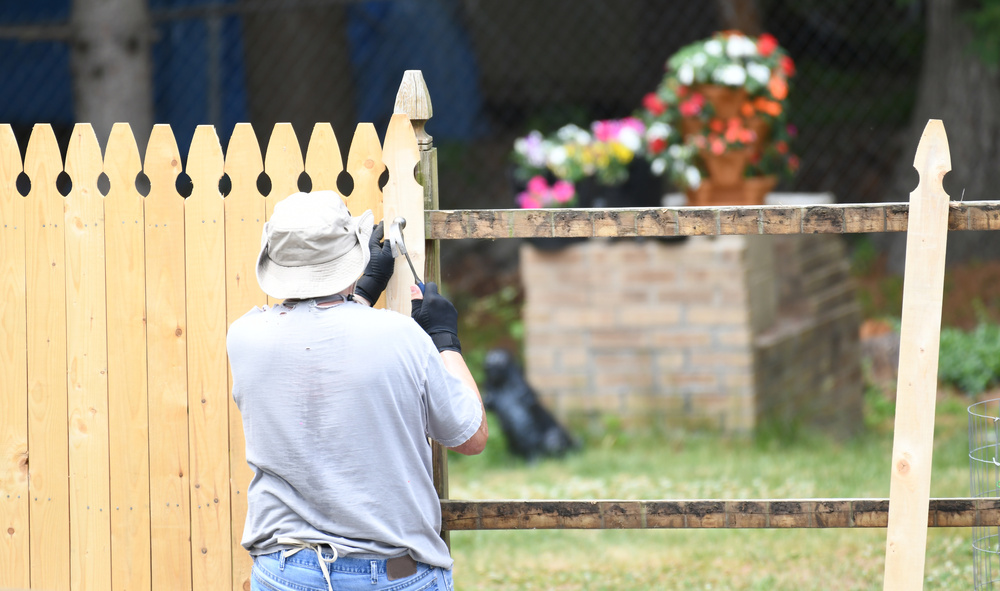Every San Antonio home needs a fence. It mainly provides privacy to your home and ensures security–whether it’s preventing your kids or pets from straying out of your yard or inhibiting burglars from entering your home. Aesthetically speaking, fences also help anchor your overall curb appeal and define your whole space.
That said, if you’re thinking of adding fencing to your home in San Antonio, there are several things you need to consider to ensure a successful installation. This article shares expert tips to install the right house fencing in San Antonio.

- Hire The Professionals
When you’re looking to install a new fence for your San Antonio property, the idea of doing it yourself and saving money can be tempting. However, unless you have the necessary skills for major projects like fencing, you’re better off hiring the experts to do the job. Going DIY can end up costing more than hiring the pros in the first place.
Hiring experts like Elite Fence & Welding, a leading fencing San Antonio contractor, ensures quality installation and avoids legal issues. When choosing an expert, you can ask for a portfolio of the fences they’ve installed. Only hire licensed, insured, and bonded companies to ensure high-quality work and protect you against future liabilities. In addition, make sure to get three to five estimates from different contractors to compare their prices and get the best deal.
- Choose The Right Material
When shopping for materials for your fence, you’ll come across numerous options. To find the right material, you need to consider your needs. Whether it’s strictly utilitarian, for privacy, or adding a decorative glamour to your home, understanding the fence’s purpose can help you choose the right material.
To help you get started, here are the most common fencing materials available in San Antonio:
- Wood
Wood is a classic fencing material that blends well with any yard style. Plus, it’s a lot cheaper than other types of fencing. Cedar, redwood, and teak are the most popular wood fencing types thanks to their durability. Bamboo is also increasing in popularity as an eco-friendly alternative.
Regardless of what you choose, make sure that your wood fence is treated to ensure longevity. It also needs frequent maintenance to prevent warping and rotting.
- Metal
Metal fencing is quite versatile and can match a variety of garden styles. Plus, it’s quite durable, and some types are more weather-resistant than wood. The different types of metal fencing to choose from include wrought iron, aluminum, and chain links.
- Composite
Composite fencing is a combination of plastic and wood materials. This type of fencing gets the beautiful look of natural wood but with the increased durability of plastic. It won’t rot or warp as badly as wood and are more resistant to pests and bugs.
- Masonry
Masonry fencing is often overlooked. It may consist of brick, concrete, stone, block, or stucco materials. They are one of the most aesthetically pleasing fencing types and are known for their longevity, lasting up to a hundred years when maintained properly. However, they are a bit pricey and will require professional installation.
- Locate Property And Utility Lines
Locating where your property ends and where your neighbors’ properties start is critical when installing new fencing. Make sure to check with the local zoning office to determine the exact dimensions of your land plot. Hiring a professional surveyor is better since they can help you find your property lines and outline where you can build your fence.
Aside from the property lines, you also need to locate and mark underground utility lines. These include water, gas, sewer, telecommunications, and power. Determine if these lines are located under the proposed site of your fence so you can avoid damaging them. If you need assistance, you can contact your utility companies to locate these lines before proceeding with the project.
- Understand Building Codes
Before installing any fencing structure on your property, you want to check with the relevant city department and ask about building codes that may dictate approved fencing height, material, and design. The general rule in the city of San Antonio specifies that the better-looking side of your fence—the one that doesn’t show rails and posts—be placed toward the public.
In addition, you need to ask how far back the fence needs to be installed on your property. You may also want to ask if your project will need a building permit before installing a fence.

Takeaway
Fences can provide numerous benefits to your home’s overall appeal and safety. That said, since installing a fence can be a tremendous undertaking, making a plan and considering the above tips can make a difference to the overall success of your project.






